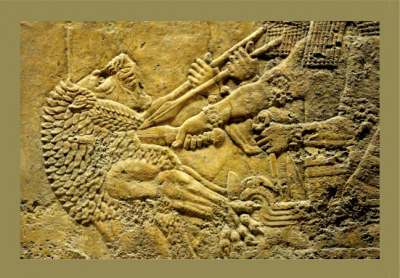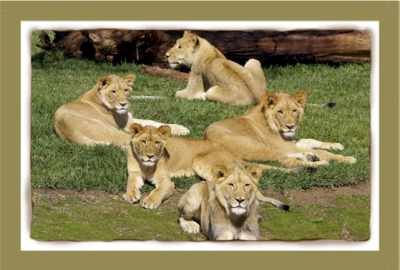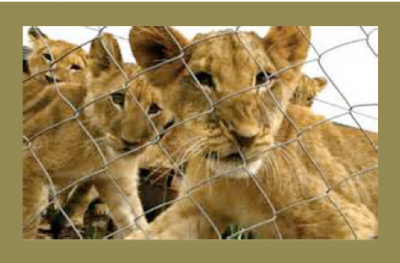|

Executive summary
Wild lion conservation recommendations:
1. Cease all trophy hunting of wild lions. “Sustainable” utilization of lions has been the biggest failure of any “conservation” programme proposed to ensure the survival of any endangered mammal.
2. Count lions via independent scientists. Cease all reliance on vested interest group or range state estimates of their lion populations to further justify trophy hunting offtake. Cease any reliance on “indirect” counts and “extrapolations”.
3. If lions are to be considered by any stretch of imagination as a species available for “sustainable offtake” let’s do some lion counts where such counts count. In other words in the hunting areas. There has been not ONE such survey in trophy hunting areas. Justifying offtake as sustainable is therefore a nonsense.
4. If rural communities are expected to live with lions, implement compensation programmes that are both durable, reliable and sustainable. Any programme that continuously relies on donor input or “tolerance” will fail in the long term. Government compensation programmes will fail because of an abundance of bureaucracy and an abundance of reluctance to pay.
5. Do better research. A much better assessment of the disease risks that challenge the survival of the few remaining large lion populations is overdue.
Captive bred lions:
1. The profits to be made from captive lion breeding are both diverse and significant – cub petting, lion walking, trophy hunting and the lion bone trade. South African conservationists have not been able to significantly affect this industry.
2. Volunteer agencies making profits from South African lion breeding facilities and trophy hunters utilizing such lions should be significantly questioned as to their concerns for animal welfare.
3. The European Union, at least, should consider banning any import of any large carnivore product derived from specific breeding programmes. The EU will not allow import of products from tiger breeding programmes in China. So why allow lion products derived from South African breeding farms?
Further details:
LionAid has addressed the issue of precipitous lion declines in Africa since we began our concerted efforts five years ago.
We have separated our lion conservation activities into two main streams, the first addressing lions in the wild, and the second addressing the issue of lions raised in captivity to supply the “canned” hunting trade.
Let’s address the plight of wild lions first.
WILD LIONS
 It has become abundantly clear that lions are rapidly and sadly becoming more and more endangered. LionAid estimates that, based on information from highly informed individuals and scientific publications, no more than 15,000 lions remain across the enormous and extensive African continent. Most of this number derives from addition of small, unconnected and scattered populations here and there – some of them containing as few as a dozen individuals. It has become abundantly clear that lions are rapidly and sadly becoming more and more endangered. LionAid estimates that, based on information from highly informed individuals and scientific publications, no more than 15,000 lions remain across the enormous and extensive African continent. Most of this number derives from addition of small, unconnected and scattered populations here and there – some of them containing as few as a dozen individuals.
These small populations cannot contribute in any meaningful way to future lion conservation, and only five populations have a long-term future.
Organizations like the IUCN mention several contributing factors to the decline of lions – loss of habitat, lion/livestock conflict, loss of natural prey, etc.
Surely these factors have contributed. But:
1. We would say that habitat loss is no longer a factor. With so few lions remaining in Africa, there is far more habitat available even in strictly protected areas than the remaining lions could occupy. Africa’s nationally protected areas cover very many hundreds of thousands of square miles. Protect the national parks better and you will protect the lions better.
2. We would say that loss of natural prey species for lions due to “bushmeat” poaching is a serious concern. Such “bushmeat” is poached for human consumption, but the various snares and even pitfall traps set for bushmeat also involve “collateral damage” for predators like lions. Many African nations do not adequately prevent such poaching even in nationally protected areas.
3. We would say that African nations need to be much more transparent about how they engage with communities living with dangerous predators. If these nations accept that large predators are important to their biodiversity conservation programmes they must involve communities better. To date, community/wildlife issues are largely placed in the lap of national and international conservation agencies without a clear and unified strategy. Some few African countries have national compensation legislation in place for losses of crops and livestock but such compensation is hardly ever paid out and if it is, does not reflect market value.
LionAid will always base our conservation priorities and guidelines for lions on scientific information.
In terms of educated ways forward, we would say that wild lion conservation would be better served by programmes that directly address the following:
1. Cease all trophy hunting of wild lions. “Sustainable” utilization of lions has been the biggest failure of any “conservation” programme proposed to ensure the survival of an endangered species. The consequence of shooting a male lion extends far beyond that individual because of complexities of lion societies.
2. Cease all reliance on range state estimates of their lion populations to further justify lion trophy hunting offtake. Such estimates are always grossly inflated to benefit commercial exploiters. The importing countries and their “scientific” authorities seem satisfied with any level of lion population estimate to justify commercial offtake. This is a BIG mistake. No lion offtake should be allowed.
3. If by some stretch of imagination lions are to be considered as a species available for “sustainable offtake” let’s do some lion counts where such counts count. There have been some lion counts with variable levels of confidence in African range states – but not ONE such survey in trophy hunting areas, and not ONE scientific survey to determine whether lion offtake is sustainable anywhere.
4. If rural communities are expected to live with lions, then implement compensation programmes that are both durable and sustainable. Any programme that continuously relies on donor input will fail in the long term. Government programmes, as stated above, will fail because of an abundance of bureaucracy and an abundance of reluctance to pay.
And in addition, LionAid would call for the following:
1. A much better understanding of the disease risks that challenge the survival of the few remaining large lion populations. We already know that wild lions in such large populations are significantly challenged with immunodeficiency viruses, canine distemper, and bovine tuberculosis at least. Disease research should be a priority to evaluate the risk levels of the few remaining large lion populations.
2. With the limited funding that wild lion conservation receives that there should be a much better coordination among lion conservation organizations. As stated above, this would necessarily involve better targeted field research, better targeted political action, and strong insistence that science rather than political expediency should guide lion conservation in the future.
Now let’s move to captive bred lions offered to hunters as a money-making scheme.
CAPTIVE BRED LIONS
LionAid has been in the forefront of activism to snuff out any future captive lion breeding for the gun. But  we acknowledge that it will be an almost impossible mission to bring change within South Africa. LionAid has published very many opinions on this issue, and we believe that the best way to undermine the financial profits from captive lion breeding is to significantly engage in the following: we acknowledge that it will be an almost impossible mission to bring change within South Africa. LionAid has published very many opinions on this issue, and we believe that the best way to undermine the financial profits from captive lion breeding is to significantly engage in the following:
1. Discourage and name and shame any agency that recruits young volunteers to participate in sham conservation activities that actually benefit South African lion breeding facilities. The agencies rely on false advertising and they should be legally challenged unless they amend their ways.
2. Motivate politicians in the European Union to call for a rejection based on animal welfare concerns against any further imports of trophies from captive bred lions. LionAid would call on organizations based in the USA to take similar actions – the USA is clearly identified as the importer of almost 80% of all trophies from captive bred lions.
3. LionAid is well aware that “canned hunting” has spread to African nations including Zimbabwe, Namibia and Mozambique. South African breeders provide the lions to be exported to those other countries. Lion trophy hunters believe they are hunting wild lions and are charged fees for such. LionAid will continue to investigate the spread of canned lion hunting.
4. LionAid believes that international pressure will be significantly more effective than local activities in South Africa to eventually eradicate any breeding programmes for lions to suit the desires of European and American trophy hunters.
| 



 It has become abundantly clear that lions are rapidly and sadly becoming more and more endangered. LionAid estimates that, based on information from highly informed individuals and scientific publications, no more than 15,000 lions remain across the enormous and extensive African continent. Most of this number derives from addition of small, unconnected and scattered populations here and there – some of them containing as few as a dozen individuals.
It has become abundantly clear that lions are rapidly and sadly becoming more and more endangered. LionAid estimates that, based on information from highly informed individuals and scientific publications, no more than 15,000 lions remain across the enormous and extensive African continent. Most of this number derives from addition of small, unconnected and scattered populations here and there – some of them containing as few as a dozen individuals. we acknowledge that it will be an almost impossible mission to bring change within South Africa. LionAid has published very many opinions on this issue, and we believe that the best way to undermine the financial profits from captive lion breeding is to significantly engage in the following:
we acknowledge that it will be an almost impossible mission to bring change within South Africa. LionAid has published very many opinions on this issue, and we believe that the best way to undermine the financial profits from captive lion breeding is to significantly engage in the following: